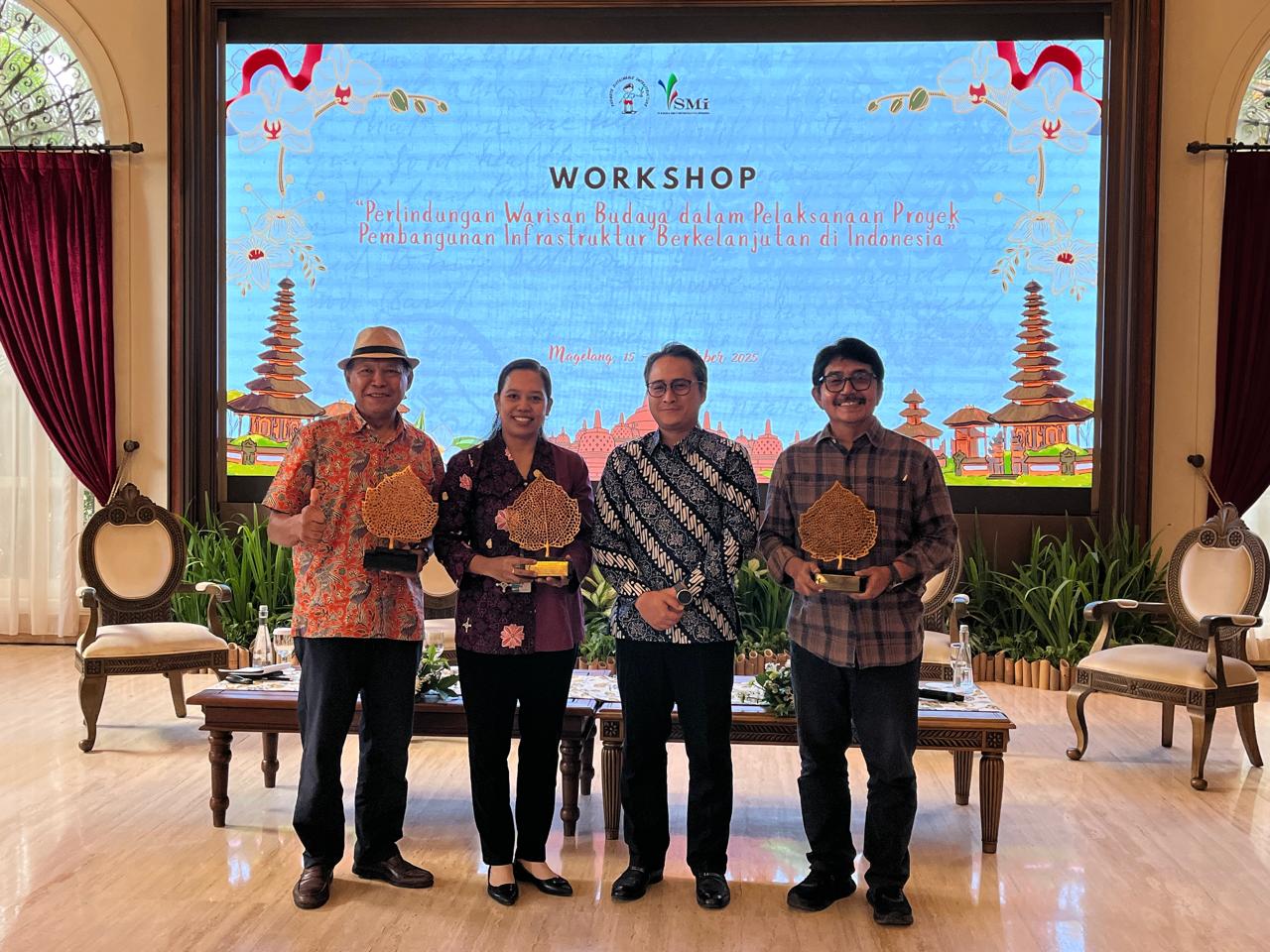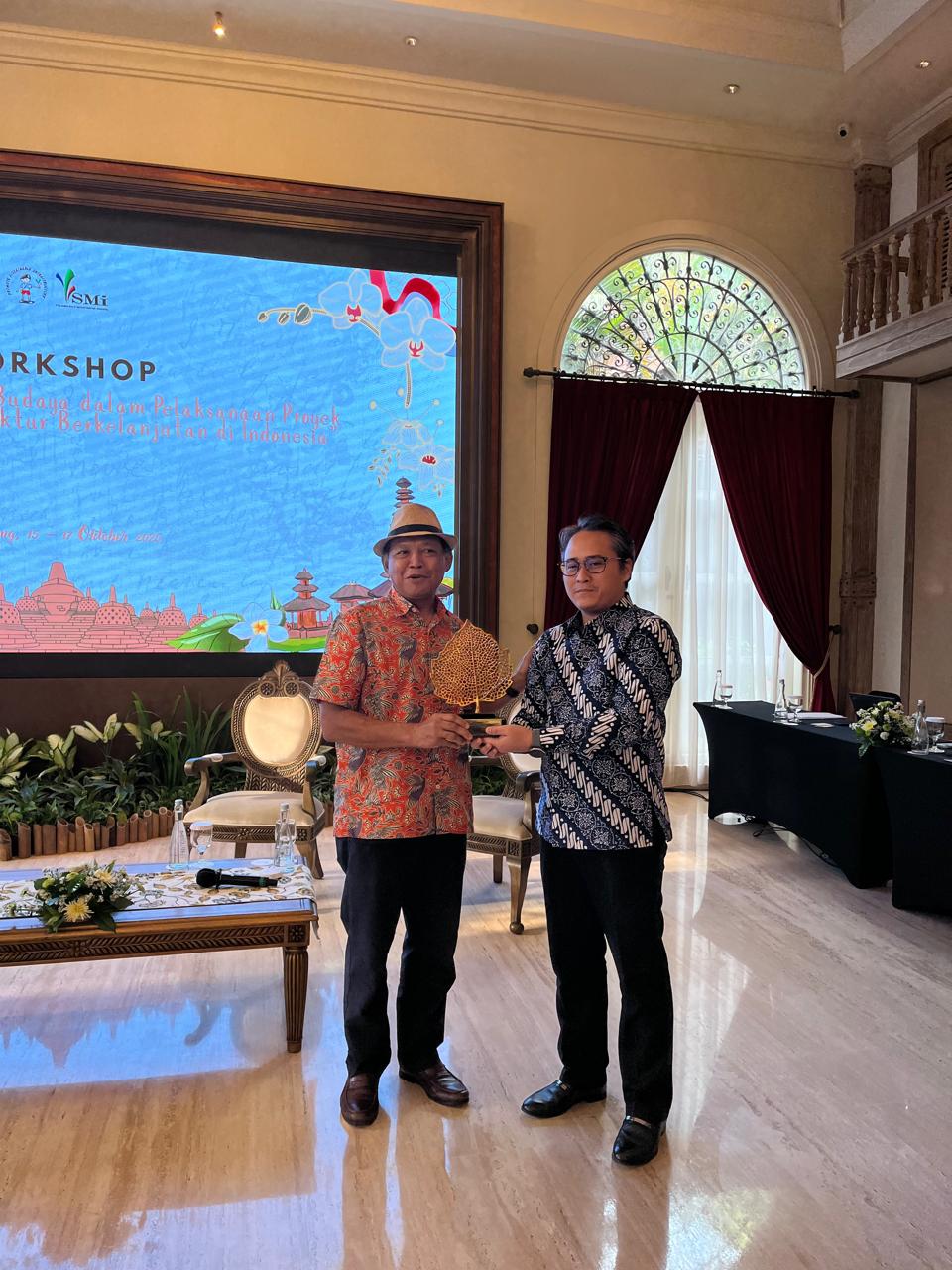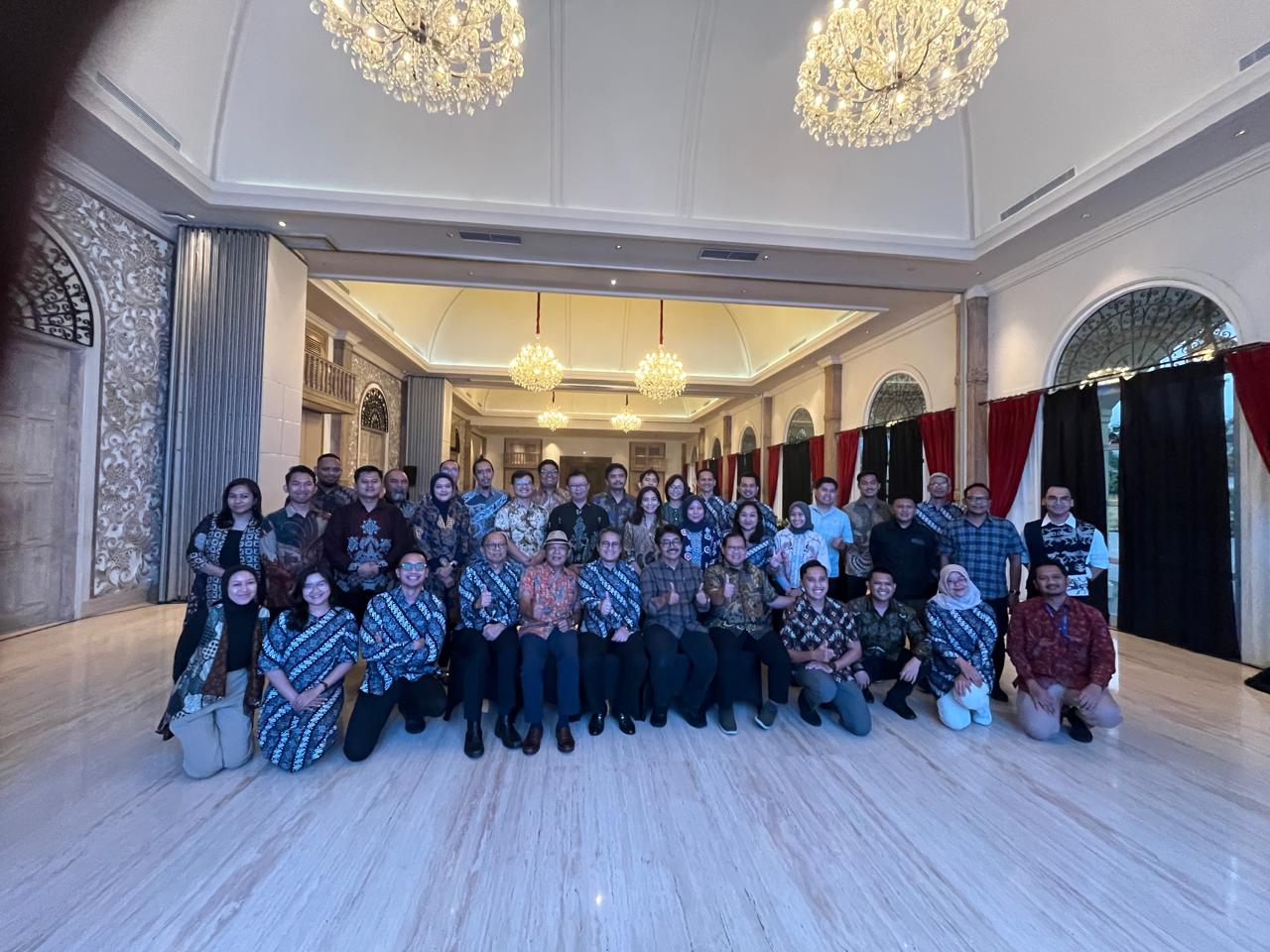Prof. Bakti Setiawan, often known as Pak Bobi, was one of the speakers at the workshop “Protection of Cultural Heritage in the Implementation of Sustainable Infrastructure Development Projects in Indonesia” organized by P.T. Sarana Multi Infrastruktur. The event took place at Hotel Plataran Borobudur, Magelang, on Wednesday, October 15, 2025, from 2:00 to 5:00 p.m. It was attended by various stakeholders involved in heritage preservation and infrastructure development. The workshop aimed to strengthen cross-sector collaboration so that cultural heritage preservation efforts can go hand in hand with sustainable development.
In his presentation titled “Tourism and Cultural Heritage: Several Issues,” Pak Bobi highlighted the importance of understanding the legal framework outlined in Indonesia’s Law No. 11 of 2010 on Cultural Heritage. He explained that the law emphasizes an area-based approach and outlines three main pillars of preservation: protection, development, and utilization. However, he noted that several aspects still require more detailed technical guidance, especially regarding the roles of local communities, the balance of authority between government levels, and private sector involvement.
Furthermore, Pak Bobi discussed the evolving dynamics of modern tourism, which demand more sustainable approaches. He introduced the 4-5A concept—Attraction, Accessibility, Amenities, Accommodation, and Ancillary—as the foundation for developing quality tourism, while also reminding participants of the potential negative impacts on the environment and local culture. In this regard, tools such as the Strategic Environmental Assessment (KLHS), Environmental Impact Assessment (AMDAL), and Heritage Impact Assessment (HIA) are essential to ensure that tourism activities do not damage the cultural heritage values that must be protected.
In the following session, Pak Bobi emphasized the importance of the Historic Urban Landscape (HUL) approach as a framework for managing change in historic areas. He explained that cultural heritage preservation is not only about maintaining physical structures but also about preserving meaning, authenticity, and the well-being of surrounding communities. He also highlighted the need for cross-sector collaboration through Public-Private Partnerships (PPP) and Community-Based Tourism (CBT), which allow heritage management to be more participatory, inclusive, and equitable.
In closing, Pak Bobi discussed the link between cultural preservation and spatial planning. He stated that national spatial planning policies must balance protected and productive zones, including designating tourism areas that align with conservation values. He cited the role of Detailed Spatial Plans (RDTR) and Spatial Utilization Conformity (KKPR) in regulating tourism activities so that they maintain a balance between environmental preservation, cultural protection, and spatial use. Effective coordination between regulations and implementation is key to ensuring that infrastructure development does not threaten heritage sustainability.
The workshop underscored that preserving cultural heritage and promoting sustainable tourism are integral to achieving the Sustainable Development Goals (SDGs). These efforts support SDG 11 (Sustainable Cities and Communities) by safeguarding the identity of historic areas and environmental quality; SDG 8 (Decent Work and Economic Growth) through community-based tourism and local economic empowerment; and SDG 4 (Quality Education) by raising awareness and promoting cultural literacy among the public. Moreover, the cross-sector collaboration promoted in this workshop also contributes to SDG 17 (Partnerships for the Goals), as cultural heritage preservation exemplifies collective efforts between government, academia, businesses, and local communities. In this way, heritage preservation is not only about protecting the past but also about using it wisely to build a sustainable future for generations to come.
Reported by Rindi Dwi Cahyati



